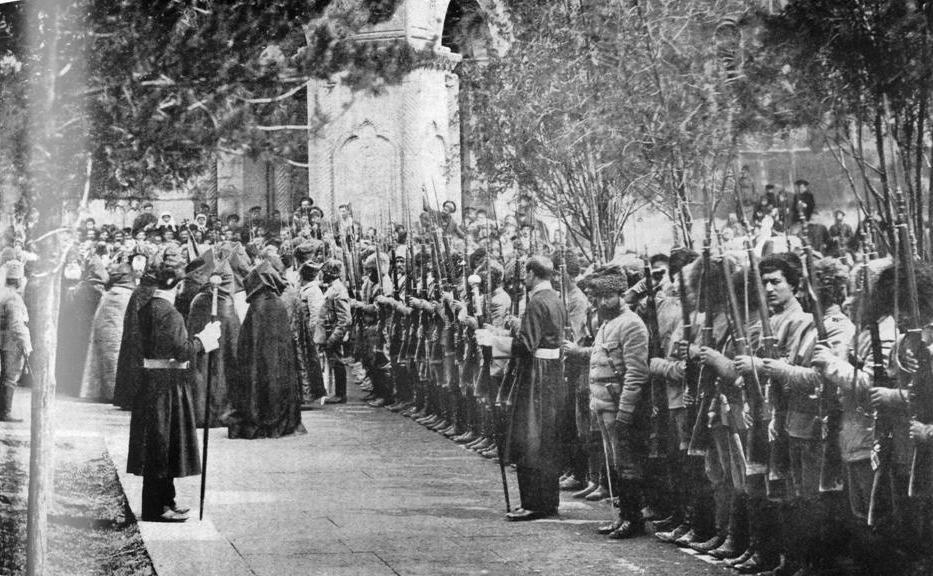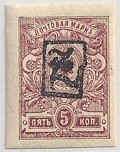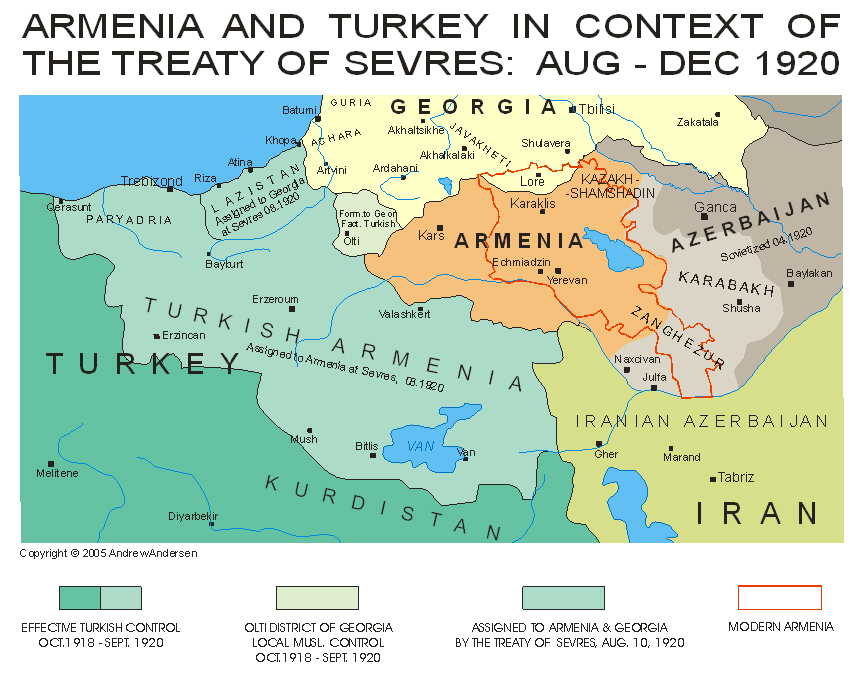ALBUM – view my Republic of Armenia (pre USSR) album
Regional Transition Chart – Transcaucasia
Fast Facts
Region: Russia Area
Group: Russian Revolution
Classification: Nation
Prior Regime: Transcaucasian Federation
Key Dates:
1918, May 28 – Declaration of Independence of the Republic of Armenia
1918, Jun 4 – Armenia signs the Treaty of Batum
1920, Jan – The Soviet Red Army defeats Denikin and his Southern White Army
1920, Nov 29 – The Republic was abolished and the Armenia SSR was created
Following Regime: Armenia Soviet Socialist Republic
Scott Catalogue: (Armenia) 1-265
Pick Catalogue: (Armenia) 1-32
History

With the fall of the Russian Empire in 1917 and the subsequent October Revolution, the provinces of the Caucasus region (Armenia, Azerbaijan and Georgia) seceded from the Empire and formed their own federal state called the Transcaucasian Federation. Due to bitter infighting between the regions, the union only lasted for 6 months. On 26 May, 1918, Georgia declared independence. Two days later, Armenia and Azerbaijan also claimed independence, thus dissolving the federation.
When the Democratic Republic of Armenia (Հայաստանի Հանրապետութիւն) was created, the region reigned in chaos. With the civil war raging in Russia, ongoing conflicts with the Ottoman army, border disputes with Georgia and Azerbaijan, and a huge influx of refuges from the south, it is a wonder the Republic of Armenia lasted almost two years. On 4 June, 1918, the fledgling government was forced to sign the Treaty of Batum, even as Ottoman forces were only 7km from Yerevan. The treaty essentially traded peace for large territorial concessions to the Turks. As the Republic began to stabilize, several battles ensued over the borders of the three Transcaucasian Republics.
As World War 1 ended with the defeat of the Ottomans and Germans, the Allies, who were appalled at the atrocities continuing to be afflicted on the Armenians realized that something needed to be done. While the different parties staked out their claims at the Jan 1919 Paris Peace Conference, Western powers agreed that a viable Armenia needed to be established. Even with the moral and grandiose public statements from the allies, no actions were actually taken as background politics and negations essentially resulted in nothing.
In the meantime, the Bolshevik government consolidated their power in the north and the Communist controlled Russian Soviet Federative Socialist Republic (Russian SFSR) turned their attention and military might to the south. In Jan, 1920, the Russians offered Armenia, Georgia and Azerbaijan an alliance against the White armies in South Russia and Caucasus in support for mutual recognition. At the same time, the Red Army totally defeated Denikin’s Army in Jan, 1920, and by March of 1920 had consolidated it’s victory over General Wrangle and all of South Russia.
Breaking their alliances, the 11th Red Army quickly moved across the Caucasus Mountains and took control of Azerbaijan and it’s rich oilfields in April, 1920. In Nov. 1920, Armenia also succumbed to the Soviet Army, forming the Socialist Soviet Republic of Armenia. Finally, Georgia fell to the advancing Red Army and the Communists control of the entire region was complete.
Initially, the Bolsheviks formed three separate states: Armenia SSR, Azerbaijan SSR and Georgia SSR, but at the insistance of Stalin, on 12 Mar, 1922, the three states were again joined to form the Transcaucasian Socialist Federative Soviet Republic. The “independence” of TSFSR was also short lived, for on Dec. 29, 1922, the Russian SFSR, the Transcaucasian SFSR, the Ukrainian SSR and the Byelorussian SSR joined to form the Union of Soviet Socialists Republics (USSR).
Stamps
 ALBUM
ALBUM
All stamps of the Republic of Armenia were hand stamped overprints and/or surcharges on various stamps of Imperial Russia.
There were several overprint designs issued, and according to Stamps of Armenia, run by Stefan Berger, there were five different groupings of overprinted stamps from the first Republic of Armenia.
– “k 60 k” surcharge (Aug 1919)
– Framed Z overprint (Nov 1919)
– Unframed Z overprint (Nov 1919)
– Ruble surcharges on HH overprints (Mar 1920)
– Mixed ruble surcharges on framed and unframed Z overprints (Mar 1920)
All of these overprints have been extensively counterfeited and should be expertized.
Additionally, in 1920 set of pictorials called the Chassepot Issues (Paris Issues) were prepared but never issued for postal use, although some were used fiscally.
Banknotes
In 1919-1920, thirty two different banknotes were issued by the Armenian Republic between 5 and 10,000 rubles. While most of the designs were fairly basic, a set of 3 pictorial notes were issued in 1919 in the denominations of 50, 100 and 250 rubles.
Links
Armenian National Institute – information on the Armenian Genocide
History of the First Republic of Armenia
The First Armenia Republic from Demirdjian the Armenian
Stamps of Armenia
Armenian Stamps at Perforations Network
Armenian Banknotes from ATSnotes






Your Armenia pages are awesome!!!!!!!!!!!!!!!!!!!!!!
Makes me happy to look at it!
Jon, thanks for visiting DCStamps. While I have a lot of them, I assume that most of them are counterfeits. There are so many of them running around. One of these days I will have a real Armenia expert look at them.
Michael